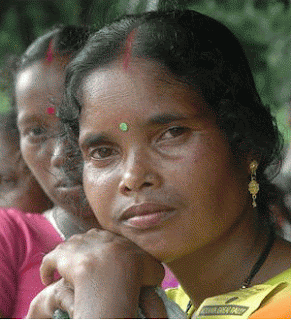While the nation of
India is emerging as an economic powerhouse in south Asia, many of that
nation's rural communities remained mired and poverty. Many faraway rural
communities may lack transportation, hospitals and many other facts of 21st
Century life that the rest of the world takes for granted.
In one such recent, tragic incident, an Indian man was
forced to carry his carry his ailing pregnant wife to the hospital. Loading his
seven-month pregnant wife on his back from their tribal home in the forest in
order to reach the nearest hospital almost 40 km away, the couple lost their
unborn child in the process.
From a tribal community in the Indian state of Kerala,
the husband reportedly had to walk by foot for an entire day before they came
across a passing vehicle whose driver agreed to take them to the nearest
hospital.
Kunjamma Roy, head of the gynecology department at
Kottayam Medical College where the woman had been taken, said that the
"woman's life could be saved, but the baby could not be saved. We induced labor
for delivery of the dead fetus."
India's tribal populations make up more than eight
percent of its 1.2 billion populations. Many live in remote villages, living
from farming, cattle rearing and selling fruit and plants from the nearby
forests. Literacy, child malnutrition and maternal and infant mortality in
these communities are among the worst in the world.
The United Nations Population Fund (UNFPA) says 63,000
women die annually during childbirth due to a lack of reproductive health
services.
Poverty remains a chronic condition for almost 30
percent of India's rural population. The incidence of rural poverty has
declined somewhat over the past three decades as a result of rural to urban
migration.
Poverty is deepest among members of scheduled castes
and tribes in the country's rural areas. In 2005 these groups accounted for 80
percent of poor rural people, although their share in the total rural
population is much smaller.
Large numbers of India's poorest people live in the
country's semi-arid tropical region. In this area shortages of water and
recurrent droughts impede the transformation of agriculture that the Green
Revolution has achieved elsewhere. There is also a high incidence of poverty in
flood-prone areas such as those extending from eastern Uttar Pradesh to the
Assam plains, and especially in northern Bihar.


No comments:
Post a Comment